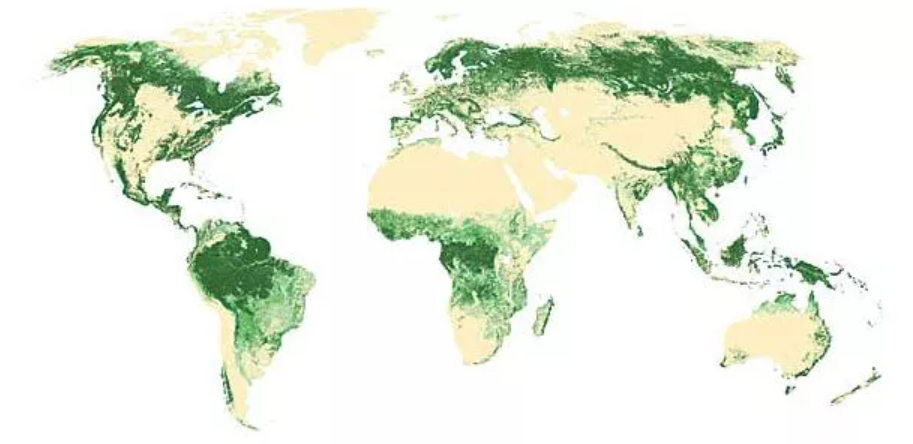
As I described earlier, I’m a forest owner/manager and a fan of permaculture, and I’ve been having a hard time finding meaningful applications for permaculture in forestry. In this post I try to answer the logical question: why would you even want to? One answer revolves around diversity and climate change.
Permaforest
A forest left alone will tend to do just fine, thank you. It does not need humans to “do permaculture” to it: just by sitting there, it cleans air and water, performs all other sorts of functions, and perpetuates itself. Why would humans be needed to aid it? Perhaps the ruling permaculture principle for forestry should be “leave well enough alone.”
Evidently, that doesn’t satisfy me. My gut instinct tells me that there are good reasons to apply permaculture to forestry. Part of that is self-interest: I want to leave a visible impression, something that will evidently have changed for the better as a direct consequence of my involvement. This self-interest has led me to find a few plausible lines of thought.
Also, since we need to pay taxes just for owning the forest, we have to cut down trees once in a while. The option of leaving well enough alone is not realistic. And if we’re going to cut those trees wisely, we need a nature-friendly way to do it.
Forests, climate, and diversity
A more general reason for applying permaculture to forestry is that forests occupy 31% of the earth’s surface, and anything that permaculture can teach us about improving the quality of woods could have a significant impact on our planet if people can find a compelling reason to apply that knowledge. Whatever protects forests is likely to help prevent catastrophic climate change.
Another more locally specific reason is that the forest we own is still fairly young and artificial. After an initial 70 years of mostly pine monoculture and only 40 years of more selective logging, it’s still very poor in species. In the long run of centuries and millennia, all the species that have a natural place there will return by themselves. But there are reasons for us not to be so patient.
Interventions
One permaculture principle that does have logical application is diversity: adding more species to increase the system’s throughput. By adding more species, more ecological niches that are currently unused will be filled. This means better cycling (and less runoff) of nutrients, better retention of water (leading to better plant health), in a positive feedback loop.
This increased throughput is particularly important because the Netherlands has one of the world’s highest rates of nitrogen deposition in forest soils from the atmosphere. To put it crudely, intensive farming brings nitrogen into the air, which gets deposited in the soil. Having more life in the soil means this nitrogen is less likely to pile up and poison the soil.
Adding species also helps in terms of making the forest more resilient against climate change: the likelihood that a few species will be able to thrive or manage in case of serious climate change gets larger as the number of species present increases.
Economics
A final reason not to leave a forest to fend for itself is economic: we want to be able to harvest quality wood. We prefer to do this in a way that does minimal damage to the forest ecosystem. But in the final equasion, we do need the income from wood harvests to pay taxes and insurance and maintain public paths and our two buildings.
Harvesting quality wood means having machines come into the forest at five year intervals and selecting some trees for future growth by removing any neighbors that might compete too strongy, while removing others that have reached optimal harvest size. Sometimes, a patch of forest grows very poorly, and it makes economic sense to clear it and start over.
All these strategies can and sometimes do incorporate permaculture principles. I’ll go into that another time.